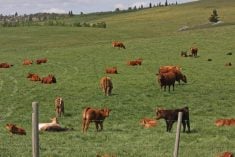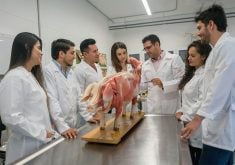Are women staying on the farm to run home-based businesses or are they
driving into town to do off-farm work?
When the children do farm chores, are they paid for their work?
Is farming a full-time job for men?
The National Farmers Union, which has started a national project to
look at farm employment practices, doesn’t think enough is known about
the nature of work done by farmers and their families.
Shannon Storey of the NFU said the last study of how farm families work
Read Also

Fuel rebate rule change will affect taxes and AgriStability
The federal government recently announced updates to the fuel rebates that farmers have been receiving since 2019-20.
was done in 1982. Since then, drought, low grain prices, rural
depopulation and free trade have changed the economy. But those making
decisions about agriculture don’t have hard figures to back the
anecdotal evidence.
“We first realized after the 1996 census that we needed it,” Storey
said.
“The census was supposed to reveal what women are doing. We really
didn’t know any more.”
She said there were two problems with Statistic Canada’s 1996 survey:
- For the first time, the survey allowed more than one name to be
written on the line asking the identity of the farm operator.
The results showed one in four farmers was a woman.
However, Storey said the question was answered inconsistently. She
heard that some women who should have identified themselves as
operators didn’t, while other women who did less on the farm were
calling themselves operators.
- “It became clear that youth had been discounted even more than
women,” Storey said.
She said it is illegal to work children under the age of 15, so it
isn’t reported. Young people are seldom paid a wage for farm work, so
it goes unreported and undervalued.
The NFU received $410,000 in grants to conduct the study, funded by the
Canada Adaptation and Rural Development program, Status of Women
Canada; the Sask. Women’s Secretariat; and the Alberta, Saskatchewan
and Nova Scotia agriculture departments. The NFU, various women’s
institutes and two Quebec groups also assisted with in-kind work.
Four farm families will be surveyed this year in each of 100 census
districts that have a high degree of agriculture. Seventy surveyors who
were trained last fall will interview the families four times during
the year. The families will also be asked to keep a diary of their work
habits. The results will be released in March 2003.
Lead researcher Diane Martz of the Centre for Rural Studies and
Enrichment in Muenster, Sask., has an advisory committee that includes
a StatsCan official.
“We made a wish list (of questions) and then cut it in half,” Martz
said.
Surveyors are into their second round of interviews with 618 family
members.
She said the study is not just measuring farm work, but also non-farm,
community, family and domestic work.
Martz figures she “will have some pretty amazing data” by the time the
7,000 hours of interviews are completed.
She said the farm income problem has been the normal situation for the
past decade, so it is not expected to slant the data.
However, Storey said changes in farming made it difficult to find farm
families instead of companies that raised pork, and to find anyone
north of Toronto or in British Columbia’s southern Okanagan Valley who
defined themselves solely as a farmer.
“In Canada, no one starves, but off-farm work now in Canada is not pin
money, but to keep the farm going,” said Storey.
“That’s a shift since the 1980s.”














